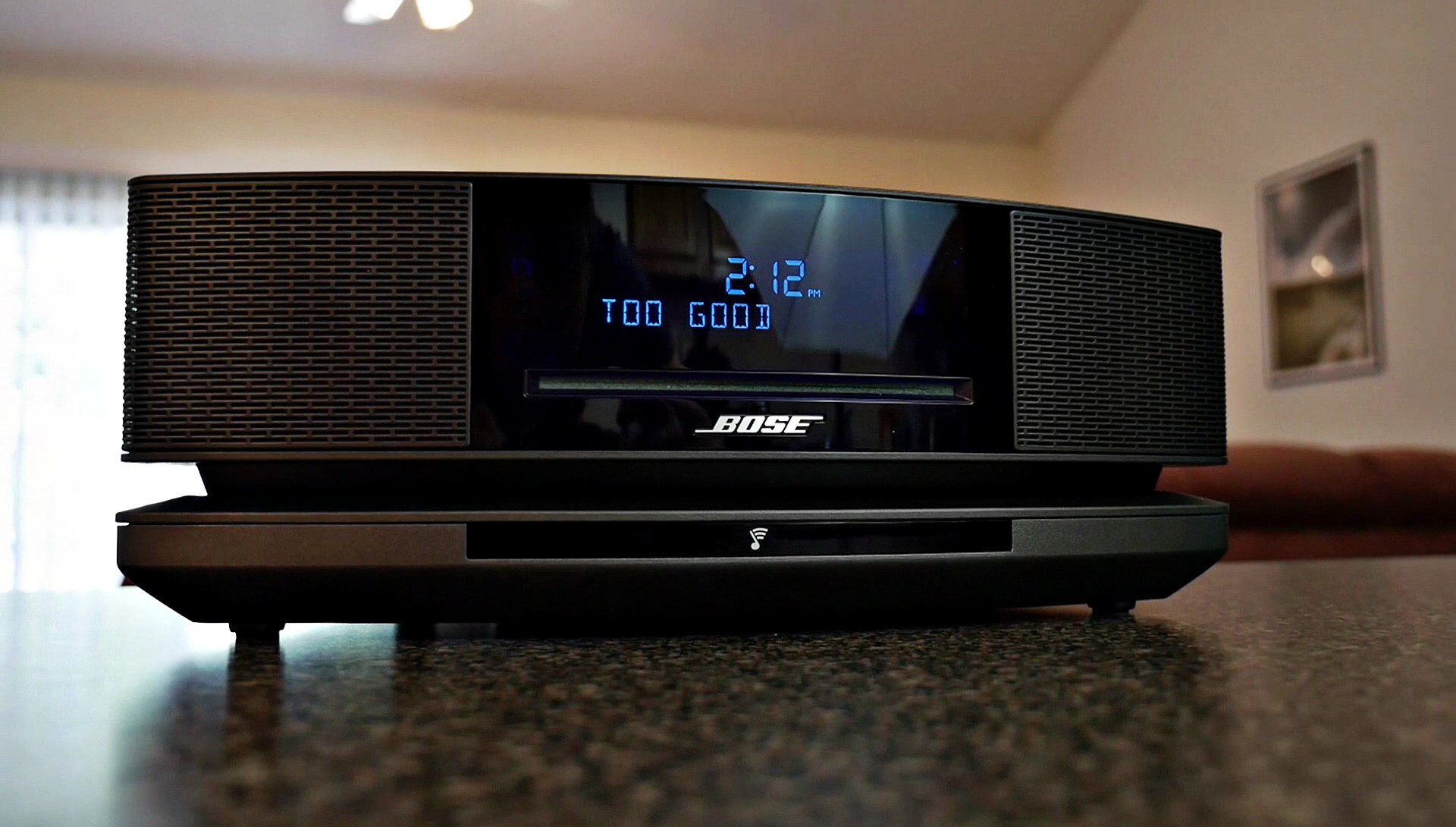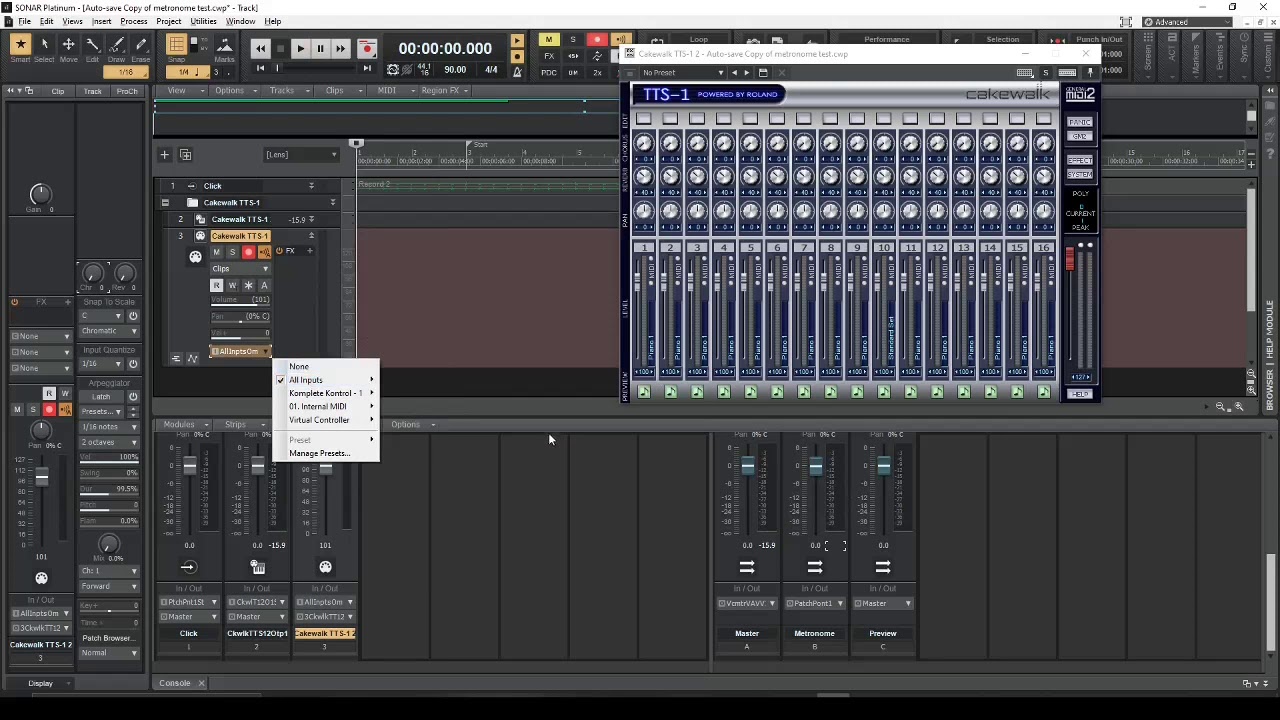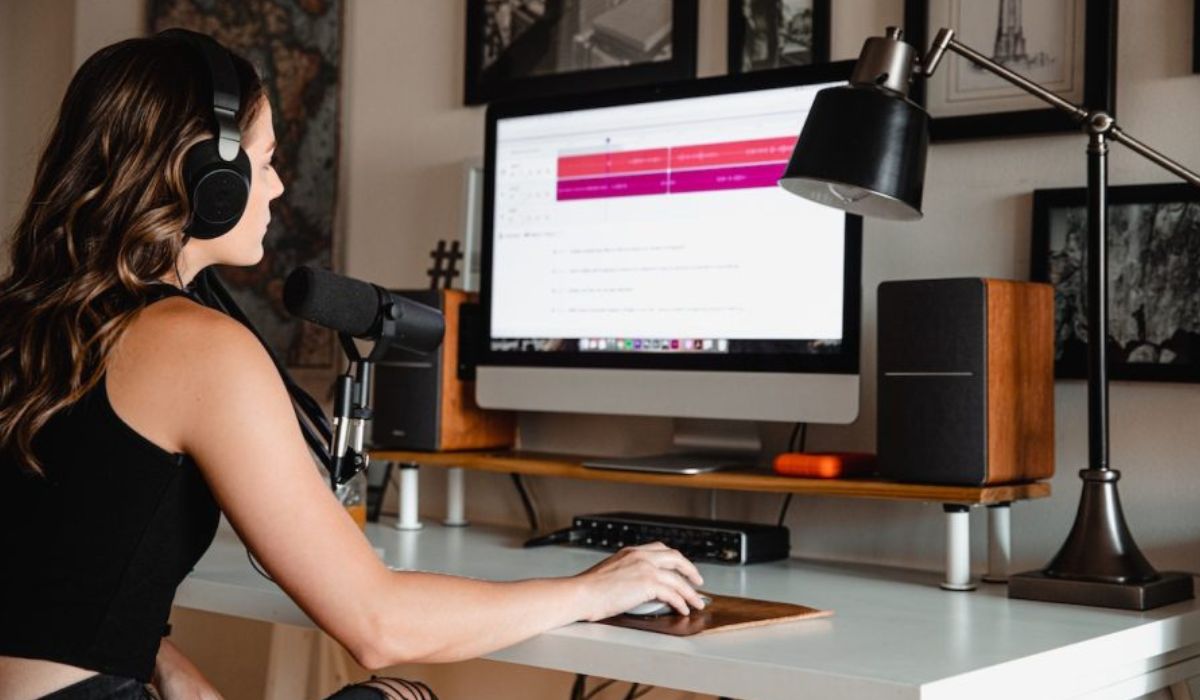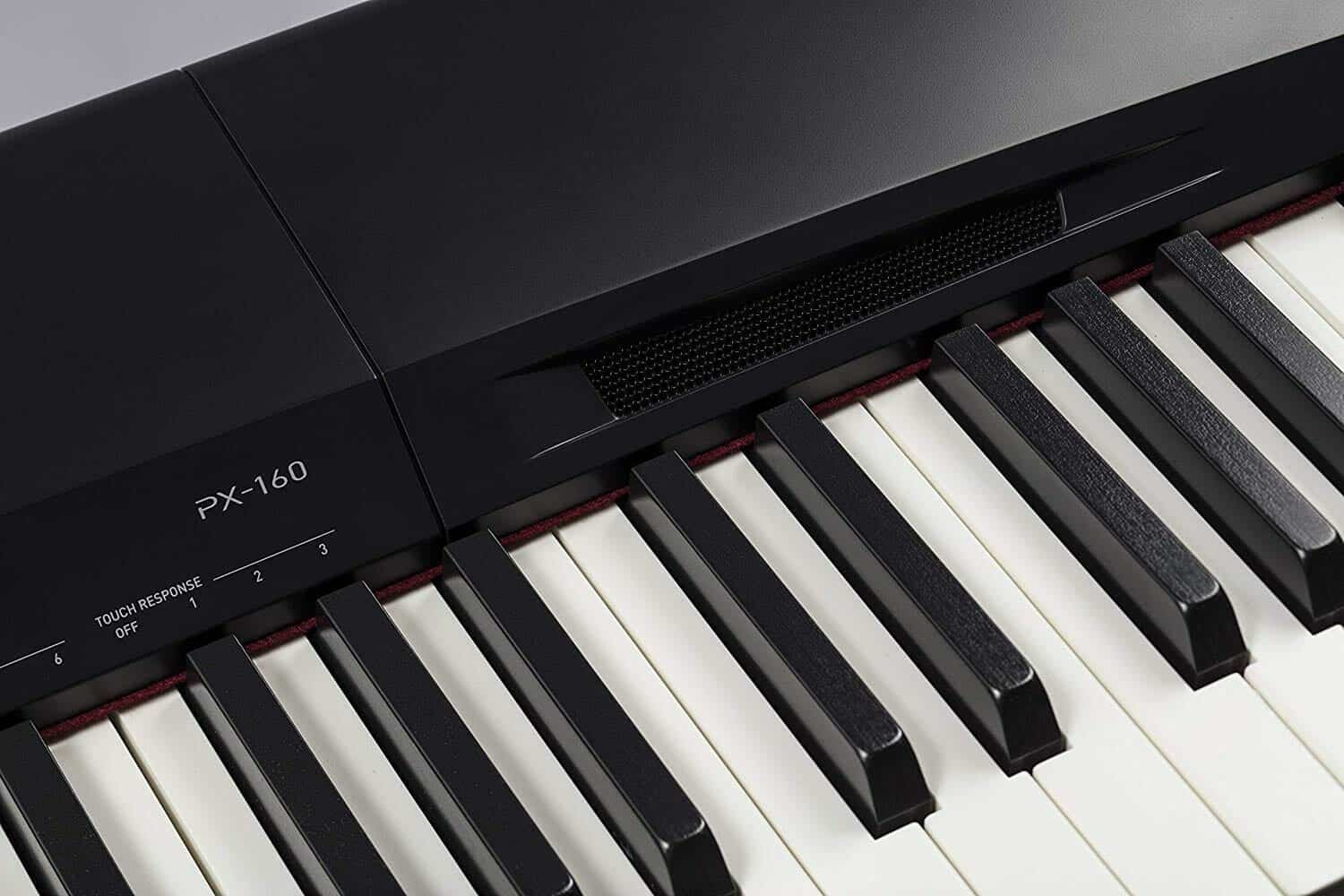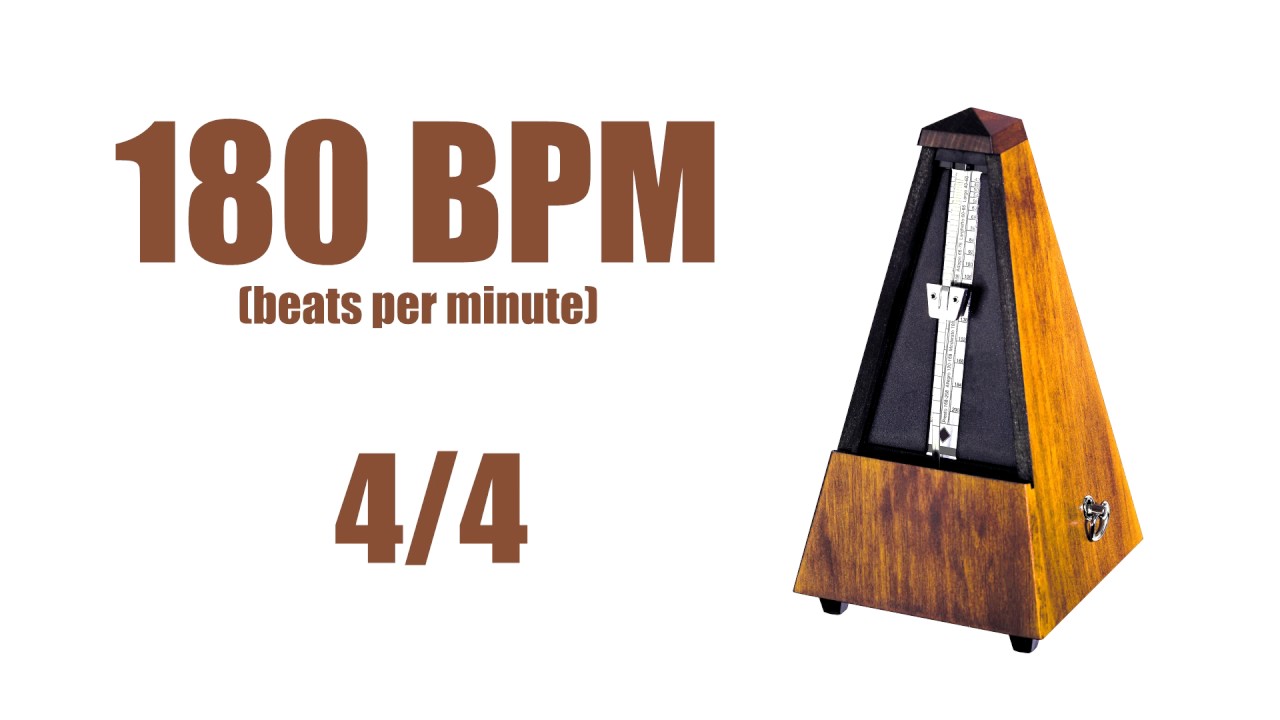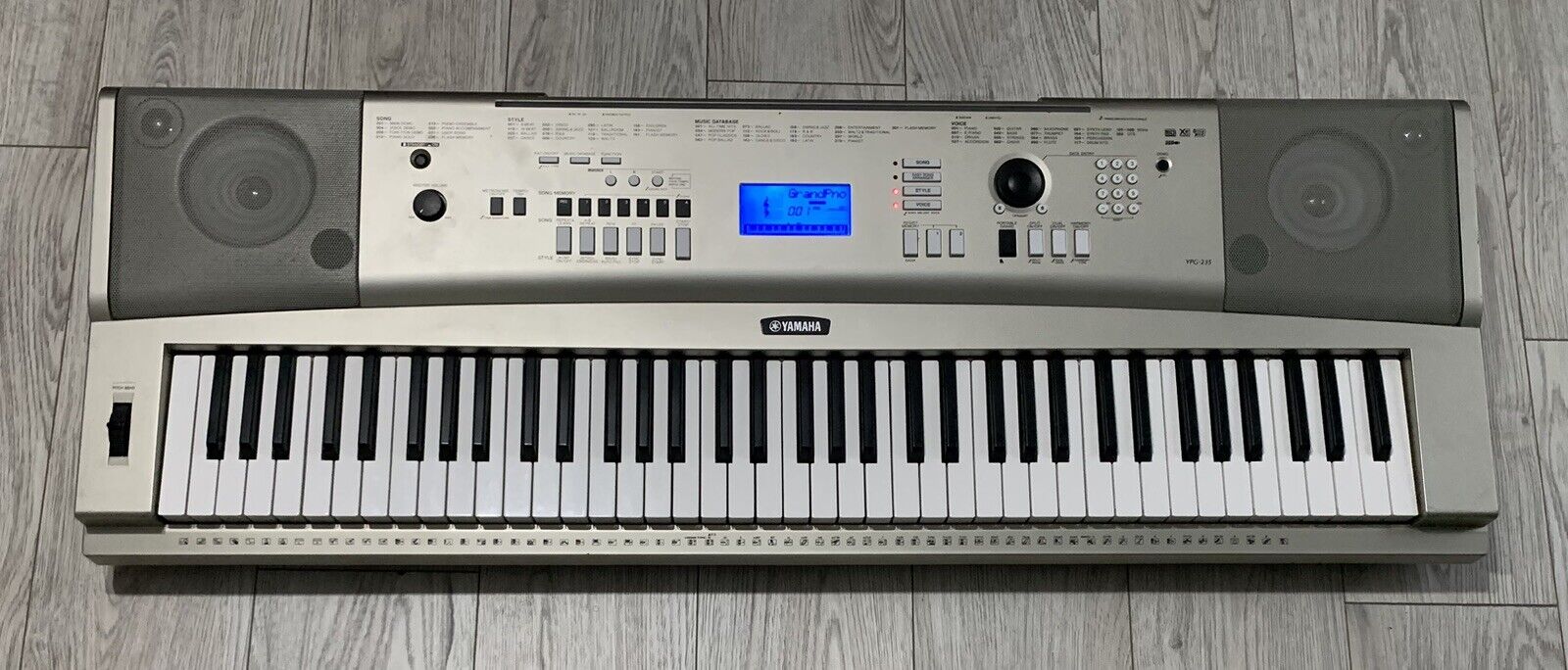Home>Production & Technology>Metronome>How To Set A Metronome For 3/4 Time
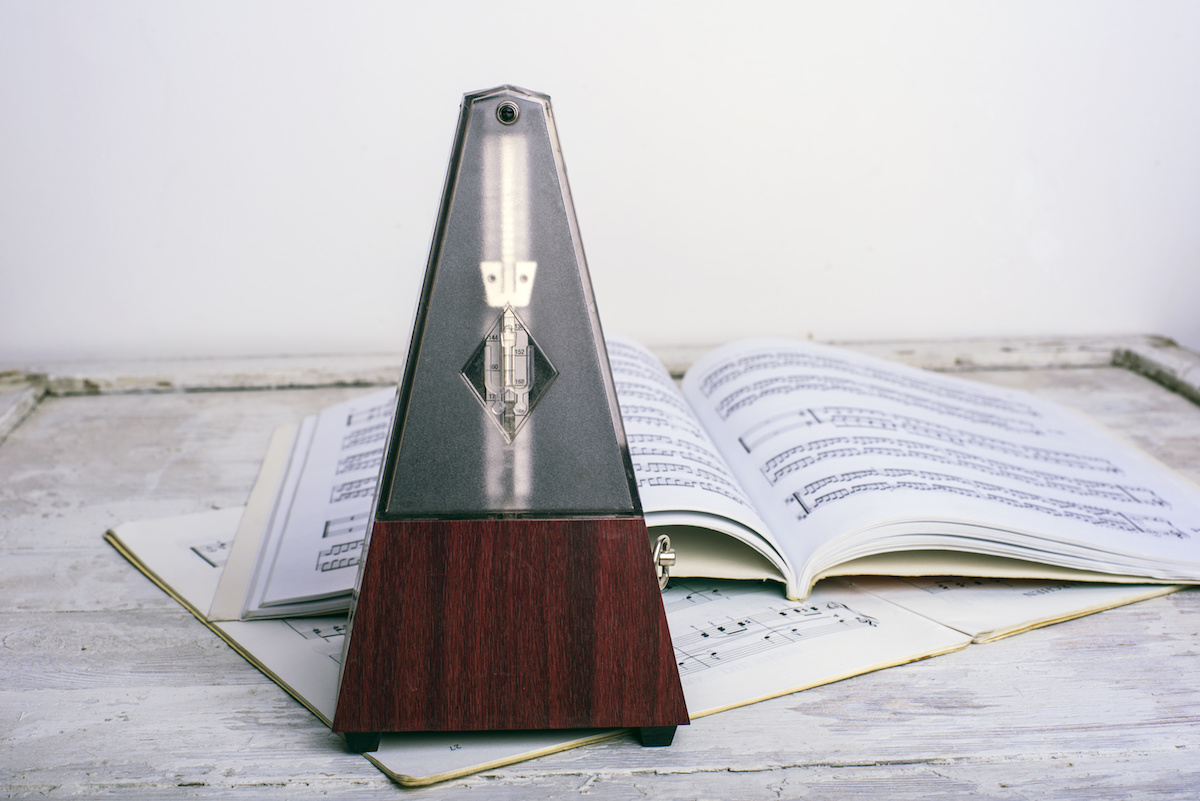

Metronome
How To Set A Metronome For 3/4 Time
Published: January 14, 2024
Learn how to set a metronome for 3/4 time with this simple guide. Improve your timing and rhythm with the help of a metronome.
(Many of the links in this article redirect to a specific reviewed product. Your purchase of these products through affiliate links helps to generate commission for AudioLover.com, at no extra cost. Learn more)
Table of Contents
Introduction
Welcome to the world of music! Whether you’re a beginner or an experienced musician, mastering the art of keeping time is essential. A metronome is a valuable tool that can help you develop a solid sense of rhythm and improve your overall musical skills. In this article, we will focus on understanding and setting a metronome for 3/4 time, one of the most common time signatures used in music.
Understanding and playing in 3/4 time can be a bit tricky, especially for beginners. However, with the help of a metronome, you can develop a strong foundation and ensure that you stay in sync with the prescribed tempo. In this article, we will cover everything you need to know about setting a metronome for 3/4 time, including choosing the right metronome, setting the tempo, adjusting accent beats, and practicing effectively.
Whether you’re playing classical, jazz, folk, or any other genre of music, the ability to keep time accurately is crucial. By using a metronome, you can develop a steady rhythm, improve your timing, and play with greater precision. So, let’s dive in and explore the world of metronomes and how they can be used to master 3/4 time.
Understanding 3/4 Time Signature
Before we delve into setting the metronome for 3/4 time, it’s important to have a clear understanding of what a time signature is and how it relates to music. The time signature is a numerical symbol placed at the beginning of a music score, indicating the number of beats per measure and the type of note that represents one beat.
In the case of 3/4 time, the top number “3” indicates that each measure will have three beats, while the bottom number “4” signifies that a quarter note (also known as a crotchet) will receive one beat. So, in simple terms, 3/4 time means that there are three beats per measure, and a quarter note represents one beat.
3/4 time is commonly found in various musical genres, including waltzes and many ballads. It has a distinctive feel and rhythmic pattern, characterized by a strong downbeat on the first beat and a lighter emphasis on the second and third beats. Understanding this rhythmic pattern is crucial when setting the metronome for 3/4 time.
When playing or practicing in 3/4 time, it’s essential to internalize the underlying rhythm and feel the pulse of each beat. The metronome serves as a guide to help you maintain a steady tempo and stay in sync. By setting the metronome correctly, you can develop a sense of timing and improve your ability to play accurately within the given time signature.
Now that you have a basic understanding of 3/4 time and its rhythmic pattern, let’s move on to the next section, where we will discuss how to choose the right metronome for your needs.
Choosing the Right Metronome
When it comes to selecting a metronome for your music practice, there are several factors to consider. The right metronome can greatly enhance your ability to play in 3/4 time and improve your overall sense of rhythm. Here are some key points to keep in mind when choosing a metronome:
- Functionality: Look for a metronome that offers a wide range of adjustable tempos. It should be able to handle various speeds, including slower and faster beats per minute (BPM). This flexibility will allow you to set the tempo accurately for 3/4 time, as well as for other time signatures.
- Visual and Audible Cues: Opt for a metronome that provides both visual and audible cues. Visual cues can be in the form of a swinging pendulum or blinking lights, while audible cues can be traditional clicks, beeps, or even drum sounds. These cues will help you internalize the rhythm and stay on beat.
- Additional Features: Consider any additional features that may be beneficial to your practice. Some metronomes have built-in tuners, rhythm patterns, or even the ability to save and recall custom settings. Evaluate your specific needs and choose a metronome that offers the features that will support your musical goals.
- User-Friendly Interface: Ensure that the metronome is easy to use and navigate. A clear and intuitive interface will allow you to quickly adjust the tempo, select different time signatures, and customize other settings as needed. It should be a tool that enhances your practice, not one that adds unnecessary complexity.
- Portability: Consider whether you need a portable metronome that you can easily carry around. If you plan to practice or perform in various locations, a compact and lightweight metronome may be more suitable.
By taking these factors into account, you can find a metronome that meets your specific needs and preferences. Remember, the goal is to have a reliable and user-friendly metronome that helps you stay on beat and develop a solid sense of rhythm.
Now that you understand the importance of choosing the right metronome, let’s move on to the next section, where we will discuss how to set the tempo for 3/4 time.
Setting the Tempo for 3/4 Time
Setting the tempo correctly is crucial when using a metronome to practice in 3/4 time. The tempo determines how fast or slow the beats are and sets the overall pace of the music. Here’s a step-by-step guide on how to set the tempo for 3/4 time:
- Start with a Reference Tempo: If you’re new to 3/4 time, it’s helpful to have a reference tempo in mind. Start with a moderate tempo, such as 60 beats per minute (BPM), to get a feel for the rhythm. As you become more comfortable, you can gradually increase or decrease the tempo as needed.
- Set the Metronome: With your chosen metronome, adjust the tempo knob or digital settings to match your desired BPM. Ensure that the metronome is set to the 3/4 time signature.
- Practice the Downbeat: Start by focusing on the strong downbeat, which is the first beat of each measure in 3/4 time. Play or practice along with the metronome, emphasizing the first beat. This will help you internalize the rhythm and enhance your sense of timing.
- Develop Subdivision: Once you’re comfortable with the downbeat, work on subdividing the remaining two beats. In 3/4 time, the second and third beats are typically lighter and less emphasized. Use the metronome as a guide to maintain a steady pulse throughout the measure.
- Experiment with Different Tempos: As your skill and familiarity with 3/4 time grow, don’t hesitate to experiment with different tempos. You can gradually increase the BPM for a more energetic feel or decrease it for a slower and more relaxed ambiance. Remember to always stay in control and maintain a steady rhythm.
Setting the tempo for 3/4 time requires practice and patience. It’s important to start at a comfortable pace and gradually build up your tempo as you become more proficient. Remember, the metronome is a valuable tool that helps keep you on track and develop a strong sense of timing.
Now that we’ve covered setting the tempo for 3/4 time, let’s move on to the next section, where we will discuss adjusting accent beats to enhance your rhythm.
Adjusting Accent Beats
While the first beat of each measure in 3/4 time is generally accented, it is also common to emphasize certain beats within the measure to add variety and musical expression. Adjusting the accent beats can help bring out different elements of the music and create a more interesting and dynamic performance. Here are some tips for adjusting accent beats:
- Experiment with Different Accents: Start by experimenting with different accent patterns within each measure. Instead of accenting only the first beat, try accenting the second or third beat. This will create a unique and varying rhythmic pattern.
- Use Subtle Accents: While accenting beats can add depth to the music, it’s important to keep the accents subtle and not overpowering. The accents should enhance the overall rhythm without distracting from the main pulse of the music.
- Play with Dynamics: Adjusting accent beats can also be done by changing the dynamics (volume) of certain beats. Play the accented beats slightly louder than the non-accented beats to create contrast and bring attention to specific parts of the music.
- Explore Syncopation: Syncopation is a technique where accents are placed on off-beats or weak beats. Experiment with syncopated accents within 3/4 time to create unexpected rhythmic patterns and add a sense of groove and complexity to your performance.
- Listen to Professional Recordings: To gain inspiration and ideas for accenting beats, listen to professional recordings of music in 3/4 time. Pay attention to how the musicians emphasize certain beats and how it contributes to the overall rhythm and musicality of the piece.
Remember that adjusting accent beats is a way to interpret and bring your own musicality to the music. It’s important to experiment and explore different options that suit your personal style and the specific piece of music you are playing.
Now that we’ve covered adjusting accent beats, let’s move on to the next section, where we will discuss effective practicing techniques with the metronome.
Practicing with the Metronome
Practicing with a metronome is an effective way to strengthen your sense of rhythm and improve your timing in 3/4 time. Here are some tips for practicing with the metronome:
- Start Slowly: Begin your practice session with a slow tempo to ensure accuracy and precision. This allows you to focus on playing each note in time with the metronome and develop a solid foundation before increasing the tempo.
- Focus on Consistency: As you play along with the metronome, pay close attention to staying in sync with the beats. Aim for consistent timing and avoid rushing or dragging. The metronome serves as a steady guide, helping you develop a reliable sense of rhythm.
- Use Different Subdivisions: Experiment with different subdivisions of the beats within the 3/4 time signature. This can include playing eighth notes, triplets, or other rhythmic patterns. Practicing different subdivisions will enhance your rhythmic versatility and expand your musicality.
- Practice Accent Patterns: Work on accenting different beats or using syncopation techniques as discussed earlier. Practice these patterns with the metronome to ensure that your accents align correctly with the desired timing.
- Gradually Increase the Tempo: Once you feel comfortable playing at a slower tempo, gradually increase the speed of the metronome. Build up your speed gradually, maintaining control and accuracy at each tempo level. This approach will help you develop a solid internal sense of timing.
- Play with Different Musical Styles: Practice with the metronome in various musical styles that utilize 3/4 time, such as waltzes, ballads, or classical compositions. This will expose you to different rhythm patterns and help you adapt your timing to different musical contexts.
- Record and Evaluate Your Progress: Record yourself playing along with the metronome and listen back to evaluate your timing and rhythmic precision. This feedback will highlight areas for improvement and allow you to track your progress over time.
Consistent and focused practice with the metronome will help you develop a solid sense of rhythm and improve your overall musicality. Remember to approach each practice session with patience and persistence, allowing yourself to gradually progress in your timing accuracy.
Now that we’ve discussed practicing with the metronome, let’s move on to the next section where we will provide some troubleshooting tips and additional advice.
Troubleshooting and Tips
While practicing with a metronome can be incredibly beneficial, you may encounter some challenges along the way. Here are some troubleshooting tips and additional advice to help you overcome common obstacles:
- Start with a slower tempo: If you find it difficult to keep up with the metronome, slow down the tempo and gradually increase it as you become more comfortable and confident.
- Focus on subdivisions: If you’re struggling with maintaining a consistent rhythm, practice subdividing the beats within the 3/4 time signature. This will help you internalize the pulse and improve your overall timing.
- Practice without the metronome: While the metronome is a valuable tool, it’s also important to practice without it. This will help you develop your own internal sense of timing and rhythm, allowing for more musical expression and flexibility.
- Experiment with different metronome sounds: If the default click sound becomes monotonous or distracting after a while, try using different sounds or options available on your metronome. This can make the practice sessions more enjoyable and engaging.
- Work on transitions: Pay particular attention to smooth transitions between measures and beats. Practice moving seamlessly from one beat to the next, ensuring a seamless flow of music.
- Record yourself: Use a recording device or software to record yourself playing with the metronome. This will allow you to critically listen and analyze your performance, identifying areas for improvement and refining your timing.
- Play along with recordings: Practice playing along with professional recordings in 3/4 time. This will not only help you keep time but also expose you to different interpretations and musical nuances.
- Stay relaxed and have fun: Remember to stay relaxed while playing with the metronome. Tension can hinder your timing and overall musicality. Enjoy the process and allow yourself to have fun while practicing.
By following these troubleshooting tips and implementing the advice provided, you can overcome obstacles and make the most of your practice sessions with the metronome. Be patient with yourself and remember that developing a strong sense of timing takes time and consistent effort.
Now that we’ve covered troubleshooting and shared valuable tips, let’s conclude this article with a summary of the key points we’ve discussed.
Conclusion
Congratulations on taking the time to understand and explore the world of metronomes and their role in mastering 3/4 time. By using a metronome effectively, you can develop a solid sense of rhythm, improve your timing, and enhance your overall musicality.
In this article, we discussed the importance of understanding 3/4 time and its rhythmic pattern. We then delved into choosing the right metronome, considering factors such as functionality, visual and audible cues, additional features, user-friendly interface, and portability.
We also explored setting the tempo for 3/4 time and provided step-by-step guidance on how to adjust accent beats to add variation and musical expression. Additionally, we discussed the benefits of practicing with the metronome, including starting slowly, focusing on consistency, using different subdivisions, and gradually increasing the tempo.
Furthermore, we shared troubleshooting tips and additional advice to help you overcome common challenges, including starting with a slower tempo, focusing on subdivisions, practicing without the metronome, experimenting with different sounds, and working on smooth transitions.
Remember, practicing with a metronome requires patience, dedication, and consistent effort. As you continue to incorporate the metronome into your practice routine, you’ll begin to notice improvements in your timing, rhythm, and overall musical performance.
So, grab your metronome, set the tempo, and embark on a journey of musical excellence. With dedication and practice, you’ll soon become a master of 3/4 time and showcase your impeccable rhythm to the world. Happy practicing!

